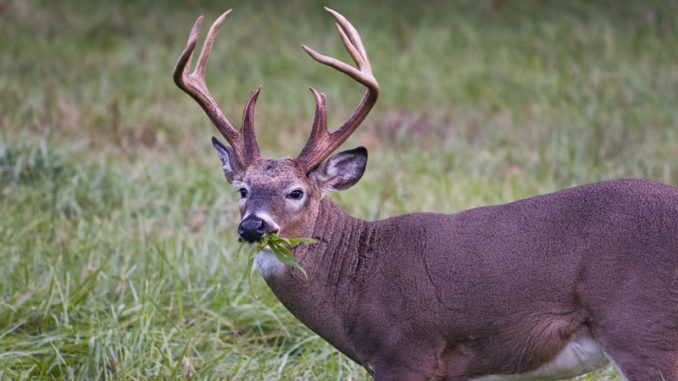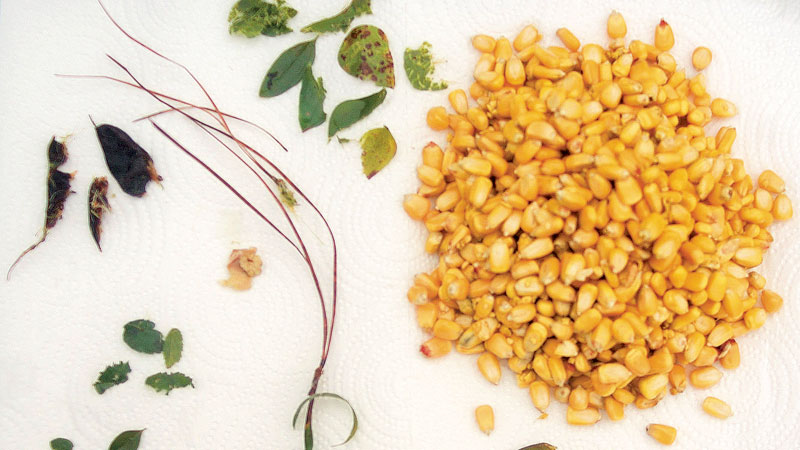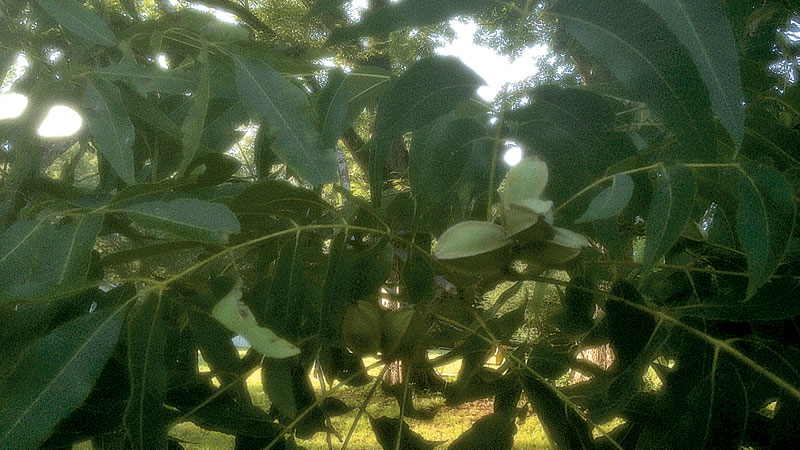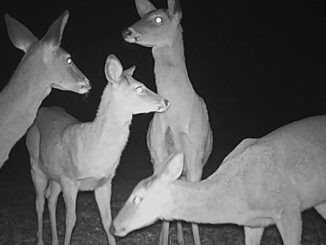
From what I am seeing in East Feliciana Parish, 2019 could be another year with plenty of acorns in the woods during hunting season.
Last season was a good one for both white oak and red oak acorns. On Pearl River WMA, I focused on the big cow oak acorns in the swamp, and it paid off with an adult buck and several hogs.
We found that white oak acorns were being eaten by deer in East Feliciana from October through January. There seems to be a belief among hunters that acorns will spoil, but this is not true. White oak acorns will often sprout and begin developing a root, but deer still eat them.
Acorns will sustain a deer herd through the fall and winter keeping them fit and healthy during the rut, but an abundant mast crop will also provide food for deer well into spring and summer. In fact, deer collections on Sherburne WMA documented deer eating striped oak acorns in August. Acorns are not high in protein, so they are not the food needed to grow antlers, but the nutrition from acorns keeps the deer fat and healthy.
Important mast
The importance of acorns is often downplayed by some biologists, because they are not the food that deer need during spring and summer to grow antlers and help with fawning. Protein from quality forage and browse provides this nutrition, and if the forest is being managed correctly by maintaining a good hardwood component, quality browse will be produced.
But these biologists follow the idea that mast is not needed in order to promote forestry practices that produce a dominant pine forest. Consequently, hardwood species are removed to produce the pine forest. Some hardwoods are kept along the creek drains, but this is not sufficient to maintain the herd quality. This is evidenced by the data produced by LDWF that shows the physical condition of deer in Louisiana’s pine forests compared to forests with a good hardwood component. These biologists suggest intensifying forage plantings and feeding deer to help improve nutrition.
Most hunting clubs in our piney woods habitat cannot grow the amount of forage needed to replace the browse that has been eliminated. However, clubs can feed deer, but most of this is feeding corn during the fall and winter. It is readily apparent from stomach samples collected from deer on these hunting clubs that deer eat corn, and there really is not much hardwood mast available at all for them.

Soft mast helps
A good, hardwood forest not only produces hard mast — acorns and pecans — but also soft mast — fruit produced by hardwood trees that includes pears, mayhaws, persimmons, crab apples, blackgum, black cherry and many other species. Persimmons and pears are important for hunters to focus on during bow season.
A good crop of pears is growing in Clinton this year. The pecan crop is also very good. Pecans are not only an important food of deer but are readily eaten, of course, by squirrels and bears. Deer hunters in the bottomland forest habitat and on the public lands, refuges and WMAs in the Mississippi River drainage parishes should scout for sign around the pecan trees.
Many people say that a good mast crop only happens every three to five years, but I know for certain that for the past four years, there has been an excellent crop of cow oak acorns on Pearl River. Likewise, the past four years have been good for white oak acorns. White oaks flower in the spring and produce acorns the same fall. Red oaks, on the other hand flower in the spring, but the acorn does not mature until the second year. Since oak flowers are wind-pollinated, good weather during the flowering period is critical for acorn production. Cold and rainy weather interferes with pollination. Summer droughts can also impact acorn production, but for the most part, Louisiana, with its Gulf Coast weather, does not get the hard freezes that presents problems for oaks.

Diversify oaks
One way to avoid total mast failures is to have and maintain a good diversity of oak species, along with other hardwood trees, in your woods. Having both red oaks, white oaks and pecans can offset the problems of mast failures.
Forest researchers are working on re-establishing the chestnut tree in the forest landscape. This was an important tree when Europeans first came to North America. It was important for wildlife, and the early settlers also discovered it was fit for human consumption. However, these trees disappeared because of a disease, the chestnut blight.
On our small property, I have planted some Dunstan chestnut trees, and they are beginning to produce fruit. It will be a major accomplishment if a tree is developed that produces fruit and is resistant to the blight.
The last total mast-crop failure I can remember was in 1993. A late-winter freeze in the spring of 1992 killed the white oak acorn crop that year, and then Hurricane Andrew destroyed the red oak acorn crop that was to develop in 1993. The storm also damaged the white oak limbs and created issues for those trees. In the fall of 1993, there were no acorns, and the cattle farmers had problems with deer coming out and eating up their winter pastures.
The overcup oak is in the white oak group and is found in the bottomland and river bottom habitats of the state. I have always found this to be a good tree for squirrel hunting. Cow oak and white oak acorns are readily eaten by deer, and hunters should scout the woods for these trees. Now is the time to get the binoculars and start looking at oak branches for developing acorns. When acorns are available, deer will be eating them, and visits to the feeders might be few. Of course, in the pine-dominant woods, corn is the food item that is most available. Hunters and landowners who do have a good hardwood component can save money and rely on the acorns for their deer-hunting success.

